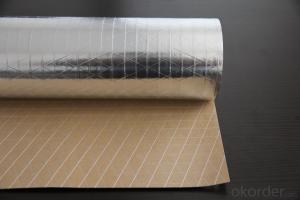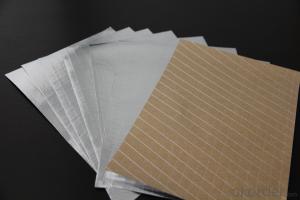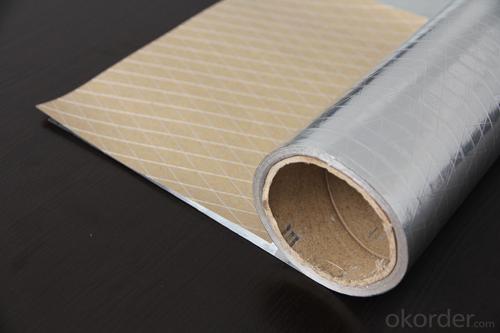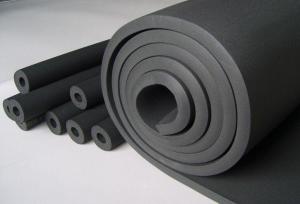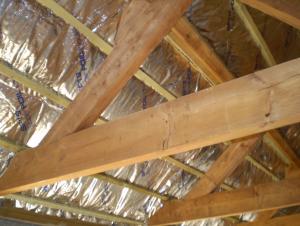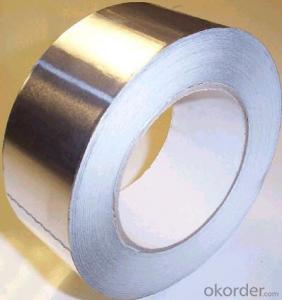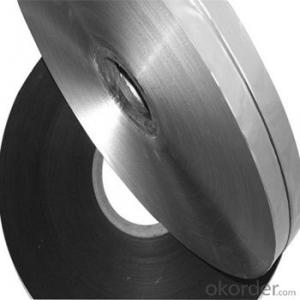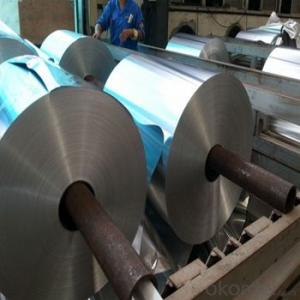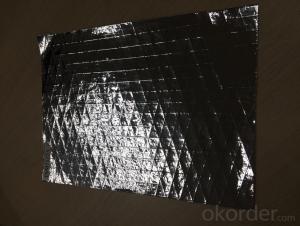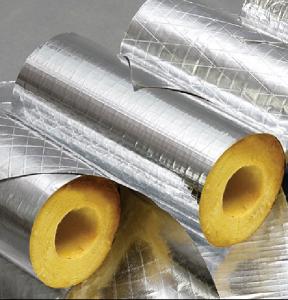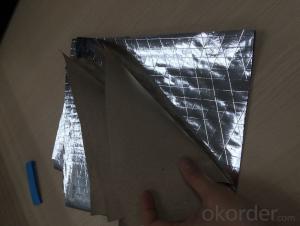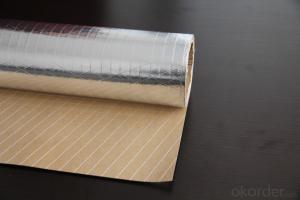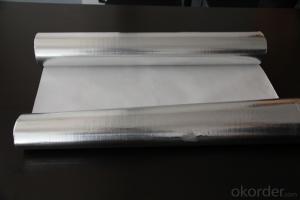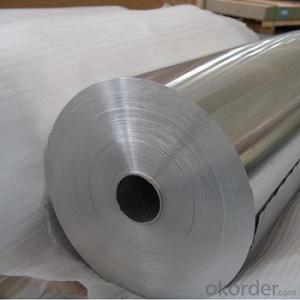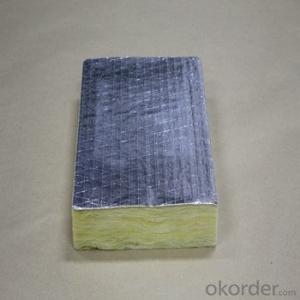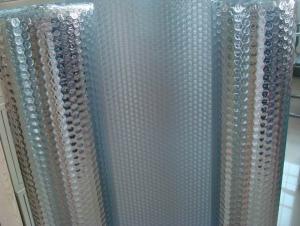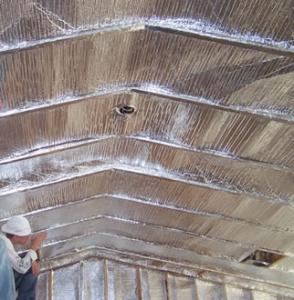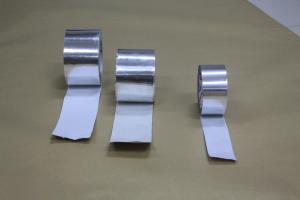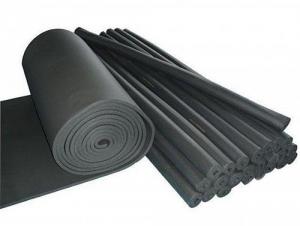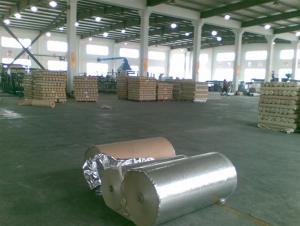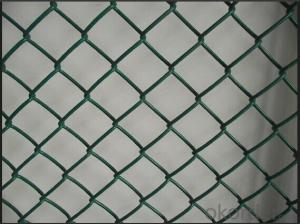Aluminum Foil Facing for Rockwool and Mineral Wool Insulation
- Loading Port:
- China Main Port
- Payment Terms:
- TT or LC
- Min Order Qty:
- 5000 m²
- Supply Capability:
- 800000 m²/month
OKorder Service Pledge
OKorder Financial Service
You Might Also Like
Introduction of Aluminum Foil Facing
Aluminum Foil Facing is a kind of film, which is made of by the aluminum foil, fiberglass scrim and Kraft paper. Someone is made of by aluminum and PE woven fabric cloth.
Application of Aluminum Foil Facing
Our aluminum foil facing are mainly used as facing for glass wool insulation, rockwool, mineral wool etc. Also aluminum foil facing is used under roof decking, under attic rafters, over existing attic thermal insulation, in floors, walls and crawl spaces, and in industrial and commercial buildings to block radiant heat coming into house through the roof during the summer and retain indoor heat generated during in winter. ,
Advantage of Aluminum Foil Facing
Light weight
• High manufacturing accuracy
• High strength
• Small inertia resistance
• Strong heat dissipation ability
• Good visual effect
• High reflective insulation
• Heat resistant, water proof, stable at high temperature;
• environmentally friendly, no smell and not-toxic;
• Smooth and clear surface;
Packing of Aluminum Foil Facing
1. Waterproof paper then PVC shrinking Film
2. Kraft paper only
3. Woven cloth
4. Kraft paper or Water Proof Film then Metal/wooden pallet
5. (Also as your request. )
Pictures of Aluminum Foil Facing
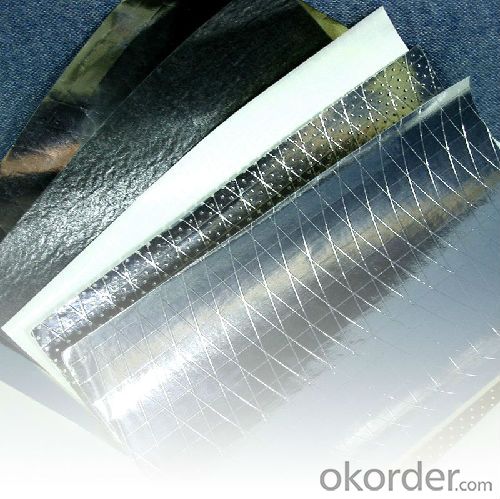
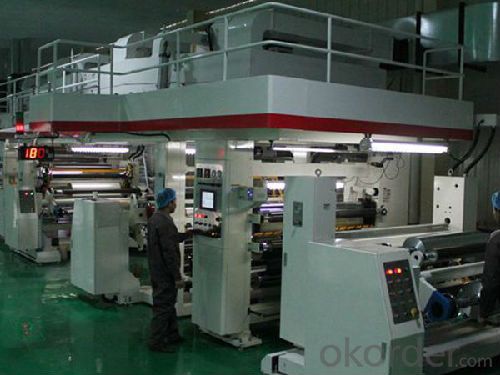
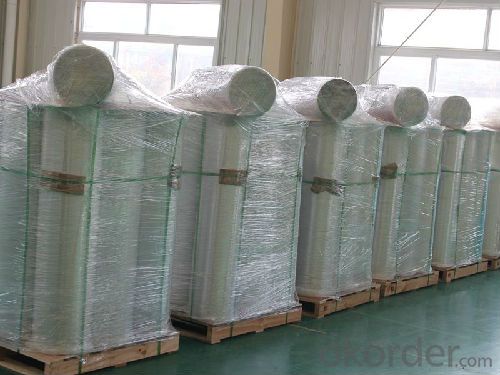
Specification of Aluminum Foil Facing
PROPERTIES | UNIT | VALUE | TEST METHOD |
Basic weight | gsm | 90 | ASTM D646 |
Tensile strength: M. D. X. D. | N/25mm | 60 20 | ASTM C1136 |
Burst strength | N | 15 | ASTM D774 |
Reflectivity of foil surface | % | 95 | ---------- |
Temp. Resistance | -29°C 66°C | No Delamination No Delamination | ASTM C1263 |
Remarks:
1. The data above are typical results and subject to change without notice.
2. Tolerance: Weight and Thickness: ±10%; Width: ±3mm;
Length: Cut Roll & Log Roll ±0.3m, Jumbo Roll ±0.5%.
3. The products should be stored at room temperature and kept from wet and heat source.
4. It is essential, as with all pressure-sensitive tapes, that the surface to which the tape is applied must be clean, dry, and free of grease and oil.
5. The user should take test and do trial-application on the above products before coming into application so as to witness and ensure suitability for user’s special purpose and technique.
FAQ
We have organized several common questions for our clients,may help you sincerely:
1. How about your company?
A world class manufacturer & supplier of Aluminum Foil Facing and is one of the large-scale professional investment Aluminum Foil Facing bases in China. Annually more than 1000 containers of Aluminum Foil Facing are exported to markets in Europe, America and Japan.
2. What is the storage condition?
The Aluminum Foil Facing should be stored at room temperature and kept from wet and heat source.
3. How to guarantee the quality of the products?
We have established the international advanced quality management system,every link from raw material to final product we have strict quality test;We resolutely put an end to unqualified products flowing into the market. At the same time, we will provide necessary follow-up service assurance.
4. How long can we receive the product after purchase?
In the purchase of product within four working days, we will arrange the factory delivery as soon as possible. The specific time of receiving is related to the state and position of customers. Commonly 7 to 10 working days can be served.
- Q: This question asks for clarification on the distinction between two types of aluminum products: aluminum foil facing and aluminum foil sheet.
- <p>Aluminum foil facing is a thin layer of aluminum laminated to a substrate, typically used in construction for insulation and moisture barrier purposes. It provides a reflective surface that can enhance energy efficiency by reflecting heat. On the other hand, aluminum foil sheet is a flat, flexible material made of pure aluminum or aluminum alloy, commonly used in cooking, food packaging, and crafts. It is not bonded to any other material and is available in various thicknesses and widths. The primary difference lies in their applications and composition; foil facing is part of a composite material for construction, while foil sheets are standalone materials for a variety of uses.</p>
- Q: What are some alternative uses for old aluminum foil that are not commonly known?
- <p>Yes, there are several creative uses for old aluminum foil. You can use it to clean stubborn grime from pots and pans, as it can effectively scrape off burnt-on food without scratching surfaces. Aluminum foil can also be used to sharpen scissors by cutting through it multiple times. It can be fashioned into a fire starter for camping, as it retains sparks and heat well. Additionally, it can be used to create a makeshift funnel for pouring liquids or to wrap around stems of plants to protect them from frost. These are just a few of the many potential uses for old aluminum foil.</p>
- Q: What are the methods to stop the aluminum foil from curling at the edges while cooking?
- <p>To prevent the edges of aluminum foil from curling up during cooking, you can dampen the edges with a little water or cooking oil. This helps to weigh down the foil and keep it flat. Additionally, you can fold the edges inward to create a small rim, which can help contain the food and prevent the foil from lifting. Another method is to use a heavier object, such as a ceramic dish or a small pan, to press down on the foil, keeping it in place. Ensure that the object is heat-resistant and won't react with the foil. These techniques can help maintain the integrity of your foil and keep it from curling up during the cooking process.</p>
- Q: Can aluminum foil be used as a facing material to construct a sandwich?
- <p>While aluminum foil is not traditionally used as a facing material for making sandwiches, it can technically be used to wrap a sandwich for storage or transportation. However, it's not suitable for direct contact with the sandwich ingredients as it can tear or leave aluminum particles on the food, which is not ideal for consumption. Instead, use bread or other edible facing materials to construct the sandwich, and aluminum foil for wrapping it if needed.</p>
- Q: This question asks for a method to clean oil stains that have occurred on aluminum foil used to cover food in a microwave.
- <p>To clean oil stains from aluminum foil used in the microwave, first let the foil cool down to avoid burns. Then, gently wipe the surface with a paper towel to remove excess oil. For stubborn stains, mix a solution of warm water and dish soap. Dip a soft cloth or sponge into the solution and gently scrub the foil. Rinse with warm water and dry thoroughly. For severe stains, you can also use a mixture of baking soda and water to create a paste, apply it to the stain, let it sit for a few minutes, then scrub and rinse. Always check the manufacturer's guidelines for cleaning aluminum foil as some may have specific recommendations or restrictions.</p>
- Q: Is it safe to use aluminum foil facing for storing perishable foods like milk or yogurt?
- <p>Using aluminum foil facing for storing perishable foods like milk or yogurt is generally safe. Aluminum foil doesn't react with these foods and can help maintain freshness by providing a barrier against light and air. However, it's important to ensure that the foil is food-grade and that the container is properly sealed to prevent contamination. Always check the foil for any tears or punctures that could compromise the integrity of the seal. Additionally, avoid using aluminum foil in direct contact with acidic foods as it may cause a reaction over time.</p>
- Q: This question asks for methods to clean oil stains from the aluminum foil side of a material, likely referring to a type of laminate flooring or backsplash.
- <p>To remove oil stains from aluminum foil facing, first, let the stain dry completely. Then, use a mild detergent mixed with warm water to dampen a cloth and gently wipe the area. Avoid using abrasive cleaners or steel wool, as they can scratch the aluminum foil. For stubborn stains, you may apply a small amount of baking soda paste (baking soda mixed with water) and gently scrub with a soft cloth. Rinse thoroughly with water and dry the area. Always test cleaning methods on a small, inconspicuous area first to ensure no damage occurs.</p>
- Q: Is it safe to use aluminum foil facing material to wrap hot food?
- <p>Yes, aluminum foil facing can be used to wrap hot food. Aluminum foil is a common material used in cooking and food storage due to its heat resistance and ability to conduct heat evenly. It is designed to withstand high temperatures, making it suitable for wrapping and cooking food in the oven or on the grill. However, it's important to ensure that the aluminum foil is food-grade and not damaged, as this can affect the safety and quality of the food. Always follow the manufacturer's guidelines for safe use.</p>
- Q: What are the advantages of using recycled aluminum foil facing compared to new aluminum foil facing?
- <p>Using recycled aluminum foil facing is generally better for the environment as it reduces waste and conserves resources. Recycling aluminum uses significantly less energy compared to producing new aluminum from raw materials. However, for applications requiring high performance or purity, new aluminum foil facing might be necessary. In terms of cost, recycled aluminum is often more affordable. It's important to consider the specific needs of your project or product when deciding between recycled and new aluminum foil facing.</p>
- Q: What safety measures should be considered when working with aluminum foil facing materials?
- <p>When using aluminum foil facing, it's important to handle it carefully to avoid punctures or tears. Always use gloves to protect your hands from sharp edges. Ensure proper ventilation to prevent inhalation of aluminum particles. Avoid using aluminum foil facing near open flames or high heat sources as it can melt or catch fire. Store aluminum foil facing in a cool, dry place, away from direct sunlight to prevent degradation. Always follow the manufacturer's guidelines for safe use and disposal.</p>
Send your message to us
Aluminum Foil Facing for Rockwool and Mineral Wool Insulation
- Loading Port:
- China Main Port
- Payment Terms:
- TT or LC
- Min Order Qty:
- 5000 m²
- Supply Capability:
- 800000 m²/month
OKorder Service Pledge
OKorder Financial Service
Similar products
Hot products
Hot Searches
Related keywords

